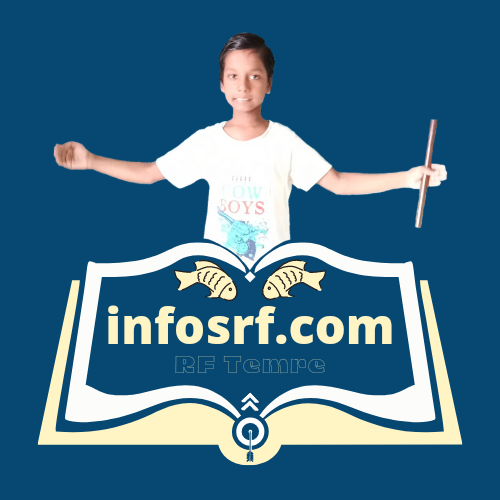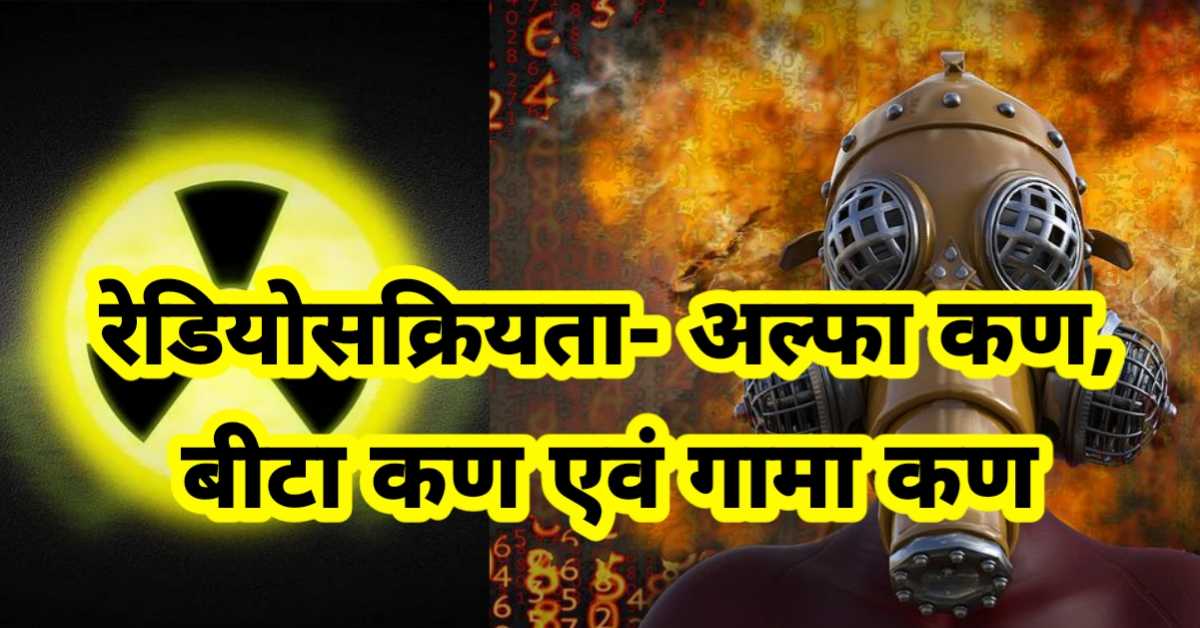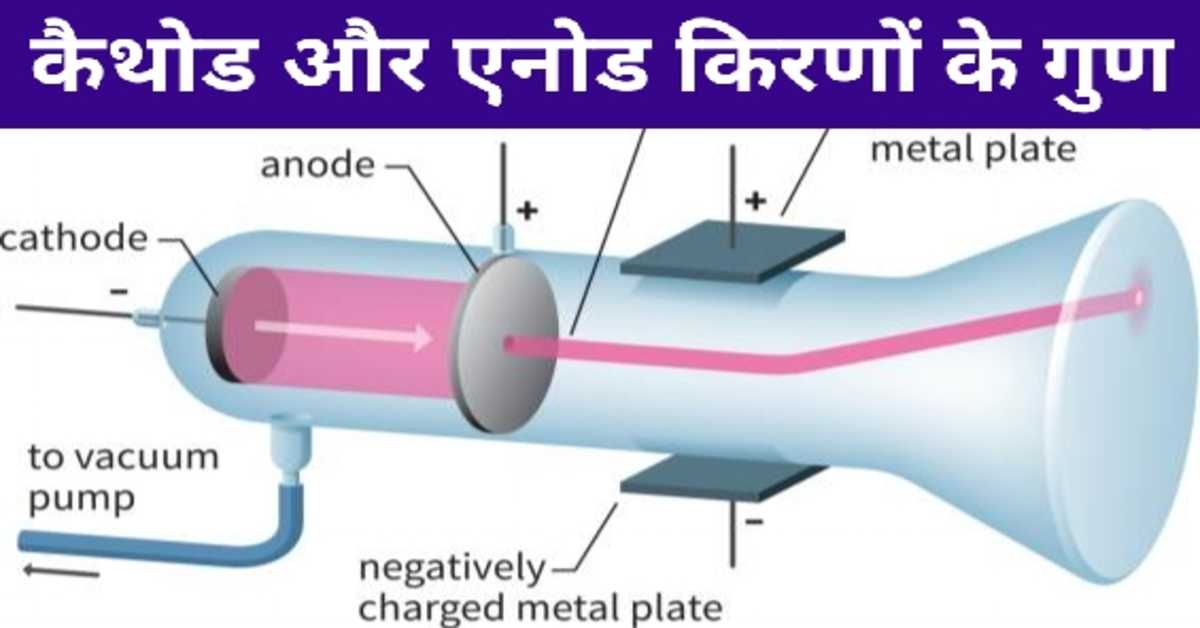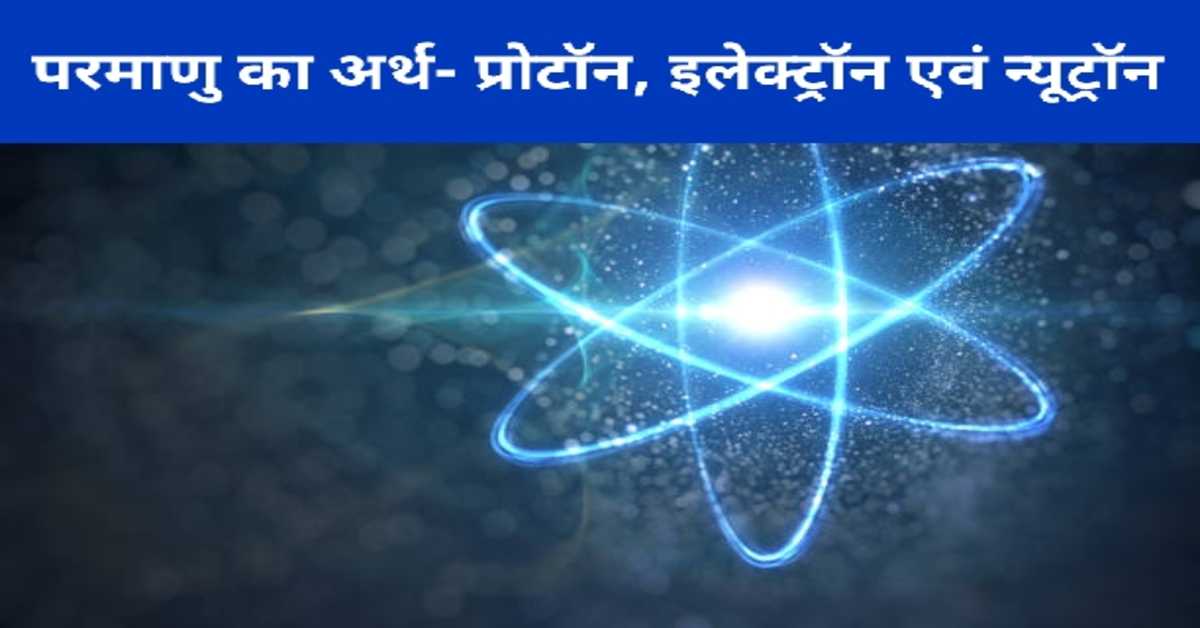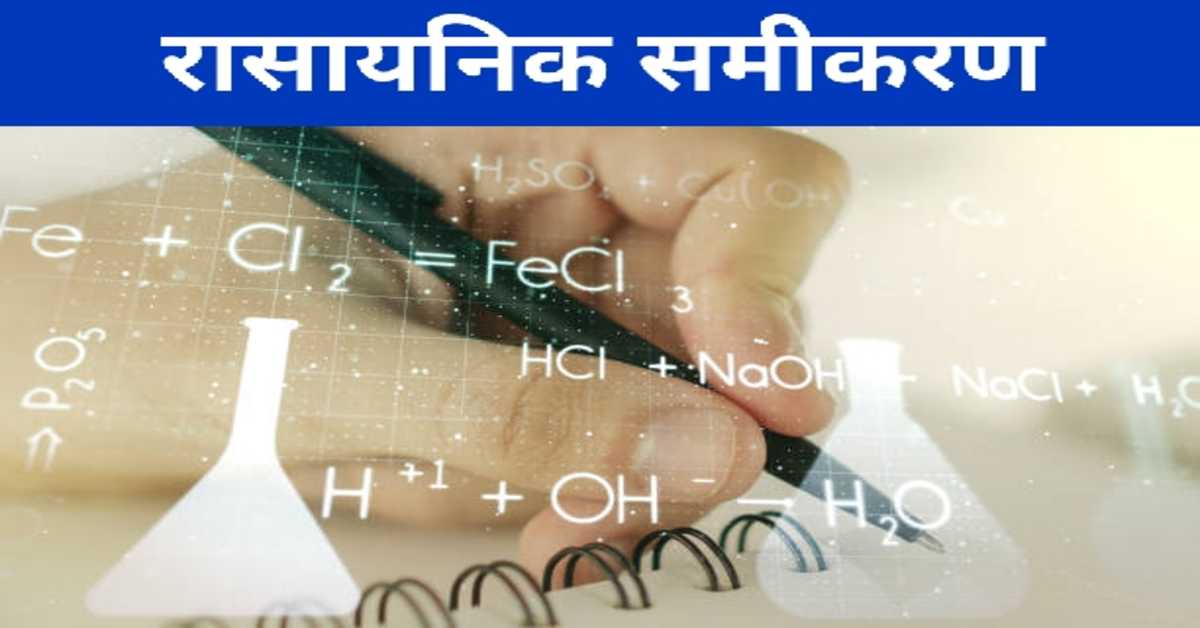
रासायनिक समीकरण | Chemical Equations- Methods of Writing, Methods of Balancing, Drawbacks, Importance
रासायनिक समीकरण- किसी रासायनिक अà¤à¤¿à¤•à¥à¤°à¤¿à¤¯à¤¾ को पà¥à¤°à¤¤à¥€à¤•à¥‹à¤‚ व सूतà¥à¤°à¥‹à¤‚ की सहायता से पà¥à¤°à¤¦à¤°à¥à¤¶à¤¿à¤¤ करना रासायनिक समीकरण कहलाता है।
रासायनिक अà¤à¤¿à¤•à¥à¤°à¤¿à¤¯à¤¾ में à¤à¤¾à¤— लेने वाले पदारà¥à¤¥à¥‹à¤‚ को अà¤à¤¿à¤•à¤¾à¤°à¤• (कà¥à¤°à¤¿à¤¯à¤¾à¤•à¤¾à¤°à¤•) तथा अà¤à¤¿à¤•à¥à¤°à¤¿à¤¯à¤¾ में बने पदारà¥à¤¥à¥‹à¤‚ को कà¥à¤°à¤¿à¤¯à¤¾à¤«à¤² (उतà¥à¤ªà¤¾à¤¦) कहते हैं।
à¤à¤• संतà¥à¤²à¤¿à¤¤ रासायनिक समीकरण में दोनों ओर ततà¥à¤µà¥‹à¤‚ के परमाणà¥à¤“ं की संखà¥à¤¯à¤¾ समान होती है। रासायनिक समीकरण में अà¤à¤¿à¤•à¤¾à¤°à¤• को बांयी ओर तथा उतà¥à¤ªà¤¾à¤¦ को दांयी ओर लिखते हैं।
जैसे- A + B (अà¤à¤¿à¤•à¤¾à¤°à¤•) = C + D (उतà¥à¤ªà¤¾à¤¦)
H2 + O = H2O
Chemical Equation- Representing a chemical reaction with the help of symbols and formulas is called a chemical equation.
The substances that take part in a chemical reaction are called reactants and the substances formed in the reaction are called products.
In a balanced chemical equation, the number of atoms of the elements is the same on both sides. In a chemical equation, the reactant is written on the left and the product on the right.
E.g. A + B (reactant) = C + D (product)
H2 + O = H2O
रासायनिक समीकरण को लिखने की विधियाठ(नियम)-
किसी रासायनिक समीकरण को लिखने के लिठनिमà¥à¤¨ नियामों (कà¥à¤°à¤®à¥‹à¤‚) को अपनाया जाता है-
1. जो अà¤à¤¿à¤•à¥à¤°à¤¿à¤¯à¤¾ वासà¥à¤¤à¤µ में संà¤à¤µ है, उसे ही लिखना चाहिà¤à¥¤
2. अà¤à¤¿à¤•à¥à¤°à¤¿à¤¯à¤¾ में à¤à¤¾à¤— लेने वाले पदारà¥à¤¥à¥‹à¤‚ के सूतà¥à¤° बायीं ओर लिखकर उनके मधà¥à¤¯ धन (+) का चिनà¥à¤¹ लगाना चाहिà¤à¥¤
3. अà¤à¤¿à¤•à¥à¤°à¤¿à¤¯à¤¾ से बनने वाले पदारà¥à¤¥à¥‹à¤‚ के सूतà¥à¤° दायीं ओर लिखकर उनके मधà¥à¤¯ धन का (+) का चिनà¥à¤¹ लगाना चाहिà¤à¥¤
4. अà¤à¤¿à¤•à¤¾à¤°à¤•à¥‹à¤‚ और उतà¥à¤ªà¤¾à¤¦à¥‹à¤‚ के बीच बराबर (=) का चिनà¥à¤¹ लगाना चाहिà¤à¥¤ इस पà¥à¤°à¤•à¤¾à¤° यह ढाà¤à¤šà¤¾ समीकरण कहलाता है।
कà¥à¤°à¤¿à¤¯à¤¾à¤•à¤¾à¤°à¤• = उतà¥à¤ªà¤¾à¤¦
5. बराबर के चिहà¥à¤¨ के दोनों ओर विà¤à¤¿à¤¨à¥à¤¨ परमाणà¥à¤“ं की संखà¥à¤¯à¤¾ को गिनकर सामान कर लेते हैं। इसके लिठरासायनिक सूतà¥à¤° को परिवरà¥à¤¤à¤¿à¤¤ नहीं करते। इस पà¥à¤°à¤•à¤¾à¤° पà¥à¤°à¤¾à¤ªà¥à¤¤ समीकरण को संतà¥à¤²à¤¿à¤¤ समीकरण कहते हैं।
उदाहरण- जिंक (Zn) और तनॠHCl की कà¥à¤°à¤¿à¤¯à¤¾ से ZnCl2 और हाइडà¥à¤°à¥‹à¤œà¤¨ बनते हैं।
Zn + HCl = ZnCl2 + H2 (ढाà¤à¤šà¤¾ समीकरण)
Zn + 2HCl = ZnCl2 + H2 (संतà¥à¤²à¤¿à¤¤ समीकरण)
Methods (rules) of writing a chemical equation-
The following rules (orders) are adopted to write a chemical equation-
1. Only the reaction which is actually possible should be written.
2. Write the formulas of the substances participating in the reaction on the left and put a plus (+) sign between them.
3. Write the formulas of the substances formed by the reaction on the right and put a plus sign (+) between them.
4. There should be an equal (=) sign between the reactants and the products. Thus this structure is called equation.
activator = product
5. Count the number of different atoms on either side of the equal sign and equalize it. Do not change the chemical formula for this. The equation thus obtained is called balanced equation.
Example- The reaction of zinc (Zn) and dilute HCl gives ZnCl2 and hydrogen.
Zn + HCl = ZnCl2 + H2 (frame equation)
Zn + 2HCl = ZnCl2 + H2 (Balanced Equations)
रसायन विजà¥à¤žà¤¾à¤¨ के इन 👇 पà¥à¤°à¤•à¤°à¤£à¥‹à¤‚ को à¤à¥€ पà¥à¥‡à¤‚।
1. रसायन विजà¥à¤žà¤¾à¤¨ की पà¥à¤°à¤®à¥à¤– शाखाà¤à¤, विà¤à¤¿à¤¨à¥à¤¨ कà¥à¤·à¥‡à¤¤à¥à¤°à¥‹à¤‚ में योगदान और शोध व अधà¥à¤¯à¤¯à¤¨ के संसà¥à¤¥à¤¾à¤¨
2. रसायनजà¥à¤ž- डॉ. पà¥à¤°à¤«à¥à¤² चंद राय, डॉ. हरगोविंद सिंह खà¥à¤°à¤¾à¤¨à¤¾, लेवोजिà¤
3. डालà¥à¤Ÿà¤¨ का परमाणॠवाद à¤à¤µà¤‚ इसकी अवधारणाà¤à¤
4. आधà¥à¤¨à¤¿à¤• परमाणà¥à¤µà¤¾à¤¦ तथा अणॠऔर परमाणॠमें अंतर
5. रासायनिक संयोग के नियम
6. परमाणॠदà¥à¤°à¤µà¥à¤¯à¤®à¤¾à¤¨, अणॠ(आणà¥à¤µà¤¿à¤•) दà¥à¤°à¤µà¥à¤¯à¤®à¤¾à¤¨, सूतà¥à¤° दà¥à¤°à¤µà¥à¤¯à¤®à¤¾à¤¨, मोल संकलà¥à¤ªà¤¨à¤¾ (संखà¥à¤¯à¤¾)
7. सूतà¥à¤°- संरचना सूतà¥à¤°, अणॠसूतà¥à¤° और मूलानà¥à¤ªà¤¾à¤¤à¥€ सूतà¥à¤°
रासायनिक समीकरण को संतà¥à¤²à¤¿à¤¤ करने की विधियाà¤-
इसके अंतरà¥à¤—त मà¥à¤–à¥à¤¯ रूप से दो विधियाठहैं-
1. आंशिक विधि
2. अनà¥à¤®à¤¾à¤¨ विधि
Methods of Balancing a Chemical Equation-
There are mainly two methods under this-
1. Partial Method
2. Estimation Method
अनà¥à¤®à¤¾à¤¨ विधि- इस विधि दà¥à¤µà¤¾à¤°à¤¾ केवल सरल समीकरणों को ही संतà¥à¤²à¤¿à¤¤ किया जाता है। इस विधि में सबसे पहले रासायनिक समीकरण का ढाà¤à¤šà¤¾ लिखते हैं, फिर अà¤à¤¿à¤•à¥à¤°à¤¿à¤¯à¤¾ में गैसीय पदारà¥à¤¥à¥‹à¤‚ को परमाणवीय अवसà¥à¤¥à¤¾ में लिखते हैं। अà¤à¤¿à¤•à¤¾à¤°à¤• à¤à¤µà¤‚ उतà¥à¤ªà¤¾à¤¦ को उचित संखà¥à¤¯à¤¾ से गà¥à¤£à¤¾ करके दोनों ओर के परमाणà¥à¤“ं की संखà¥à¤¯à¤¾ को बराबर कर लेते हैं तथा परमाणवीय अवसà¥à¤¥à¤¾ में गैसों को आणà¥à¤µà¤¿à¤• अवसà¥à¤¥à¤¾ में बदलने के लिठदोनों ओर 2 से गà¥à¤£à¤¾ कर देते हैं।
उदाहरण- पोटेशियम कà¥à¤²à¥‹à¤°à¥‡à¤Ÿ को गरà¥à¤® करने पर पोटेशियम कà¥à¤²à¥‹à¤°à¤¾à¤‡à¤¡ व ऑकà¥à¤¸à¥€à¤œà¤¨ बनते हैं।
KClO3 =(गरà¥à¤®) KCl + O (ढाà¤à¤šà¤¾ समीकरण)
KClO3 = KCl + 3 O (परमाणà¥à¤µà¤¿à¤• समीकरण)
2 KClO3 = 2 KCl + 3 O2 (आणà¥à¤µà¤¿à¤• समीकरण)
कॉपर को सांदà¥à¤° सलà¥à¤«à¥à¤¯à¥‚रिक अमà¥à¤² के साथ गरà¥à¤® करने पर कॉपर सलà¥à¤«à¥‡à¤Ÿ, सलà¥à¤«à¤° डाई ऑकà¥à¤¸à¤¾à¤‡à¤¡ (SO2) व जल (H2O) बनता है।
Cu + H2SO4 =(गरà¥à¤®) CuSO4 + SO2 + H2O (ढाà¤à¤šà¤¾ समीकरण)
Cu + 2 H2SO4 = CuSO4 + SO2 + H2O (परमाणà¥à¤µà¤¿à¤• समीकरण)
Cu + 2 H2SO4 = CuSO4 + SO2 + 2 H2O (आणà¥à¤µà¤¿à¤• समीकरण)
Approximation Method- By this method only simple equations are balanced. In this method first write the structure of the chemical equation, then write the gaseous substances in the reaction in the atomic state. By multiplying the reactant and product by the appropriate number, the number of atoms on both sides is equal and to convert the gases in the atomic state to the molecular state, multiply by 2 on both sides.
Example- On heating potassium chlorate, potassium chloride and oxygen are formed.
KClO3 =(hot) KCl + O (frame equation)
KClO3 = KCl + 3 O (atomic equation)
2 KClO3 = 2 KCl + 3 O2 (Molecular Equation)
Copper sulphate, sulfur dioxide (SO2) and water (H2O) are formed when copper is heated with concentrated sulfuric acid.
Cu + H2SO4 =(hot) CuSO4 + SO2 + H2O (framework equation)
Cu + 2 H2SO4 = CuSO4 + SO2 + H2O (Atomic Equation)
Cu + 2 H2SO4 = CuSO4 + SO2 + 2 H2O (Molecular Equation)
à¤à¥Œà¤¤à¤¿à¤•à¥€ विजà¥à¤žà¤¾à¤¨ के इन 👇 पà¥à¤°à¤•à¤°à¤£à¥‹à¤‚ को à¤à¥€ पà¥à¥‡à¤‚।
1. à¤à¥Œà¤¤à¤¿à¤• राशियाठऔर उनके मातà¥à¤°à¤•
2. पà¥à¤°à¤®à¥à¤– à¤à¥Œà¤¤à¤¿à¤• शासà¥à¤¤à¥à¤°à¥€ à¤à¤µà¤‚ उनका योगदान
3. नà¥à¤¯à¥‚टन के गति के नियम
4. à¤à¥Œà¤¤à¤¿à¤•à¥€ के पà¥à¤°à¤®à¥à¤– उपकरण à¤à¤µà¤‚ उनके आविषà¥à¤•à¤¾à¤°à¤•
5. à¤à¥Œà¤¤à¤¿à¤• राशियां à¤à¤µà¤‚ उनके पà¥à¤°à¤•à¤¾à¤°
आंशिक विधि- इस विधि दà¥à¤µà¤¾à¤°à¤¾ जटिल समीकरणों को संतà¥à¤²à¤¿à¤¤ किया जाता है, इसमें जटिल समीकरण को आंशिक समीकरण के रूप में लिखते हैं। आंशिक समीकरणों को संतà¥à¤²à¤¿à¤¤ कर लेते हैं। यदि आंशिक समीकरण संतà¥à¤²à¤¿à¤¤ नहीं है तो इसे किसी पूरà¥à¤£à¤¾à¤‚क संखà¥à¤¯à¤¾ से गà¥à¤£à¤¾ कर देते हैं। इसके बाद इन आंशिक समीकरणों को इस पà¥à¤°à¤•à¤¾à¤° जोड़ते हैं कि माधà¥à¤¯à¤®à¤¿à¤• उतà¥à¤ªà¤¾à¤¦ जो अंतिम कà¥à¤°à¤¿à¤¯à¤¾ में पà¥à¤°à¤¾à¤ªà¥à¤¤ नहीं होते हैं, कट जाà¤à¤ या विलà¥à¤ªà¥à¤¤ हो जाà¤à¤à¥¤
उदाहरण- कासà¥à¤Ÿà¤¿à¤• सोडा पर ठंडे कà¥à¤²à¥‹à¤°à¥€à¤¨ जल की कà¥à¤°à¤¿à¤¯à¤¾ से NaCl व सोडियम हाइपोकà¥à¤²à¥‹à¤°à¤¾à¤‡à¤¡ (NaOCl) à¤à¤µà¤‚ जल बनता है।
Cl2 + H2O = HCl + HOCl
NaOH + HCl = NaCl + H2O
NaOH + HOCl = NaOCl + H2O
अà¤à¥€à¤·à¥à¤Ÿ समीकरण-
Cl2 + 2 NaOH = NaCl + NaOCl + H2O
Partial Method- Complex equations are balanced by this method, in which the complex equation is written as a partial equation. Let us balance the partial equations. If the partial equation is not balanced, multiply it by an integer number. Then add these partial equations in such a way that the secondary products which are not obtained in the final reaction are cut off or lost.
Example- The action of cold chlorine water on caustic soda to form NaCl and sodium hypochloride (NaOCl) and water.
Cl2 + H2O = HCl + HOCl
NaOH + HCl = NaCl + H2O
NaOH + HOCl = NaOCl + H2O
Required Equation-
Cl2 + 2 NaOH = NaCl + NaOCl + H2O
रासायनिक समीकरण की कमियाà¤-
1. रासायनिक समीकरण में अà¤à¤¿à¤•à¤¾à¤°à¤•à¥‹à¤‚ à¤à¤µà¤‚ उतà¥à¤ªà¤¾à¤¦à¥‹à¤‚ की à¤à¥Œà¤¤à¤¿à¤• अवसà¥à¤¥à¤¾ जैसे ठोस, दà¥à¤°à¤µ, गैस का जà¥à¤žà¤¾à¤¨ नहीं होता।
2. अà¤à¤¿à¤•à¥à¤°à¤¿à¤¯à¤¾ की दर रासायनिक समीकरण देखकर जà¥à¤žà¤¾à¤¤ नहीं होती है।
3. इसके दà¥à¤µà¤¾à¤°à¤¾ यह पता नहीं चलता कि कोई गैस निकलती है या अवकà¥à¤·à¥‡à¤ª बनता है।
4. इससे अà¤à¤¿à¤•à¥à¤°à¤¿à¤¯à¤¾ की कà¥à¤°à¤¿à¤¯à¤¾ विधि का जà¥à¤žà¤¾à¤¨ नहीं होता।
5. इससे यह पता नहीं चलता है कि अà¤à¤¿à¤•à¥à¤°à¤¿à¤¯à¤¾ उतà¥à¤•à¥à¤°à¤®à¤£à¥€à¤¯ है या अनà¥à¤¤à¥à¤•à¥à¤°à¤®à¤£à¥€à¤¯à¥¤
6. इससे अà¤à¤¿à¤•à¥à¤°à¤¿à¤¯à¤¾ के पूरà¥à¤£ होने में कितना समय लगेगा इसका à¤à¥€ जà¥à¤žà¤¾à¤¨ नहीं होता।
7. अà¤à¤¿à¤•à¥à¤°à¤¿à¤¯à¤¾ किन सà¥à¤¥à¤¿à¤¤à¤¿à¤¯à¥‹à¤‚ में होती है, इसका à¤à¥€ जà¥à¤žà¤¾à¤¨ नहीं होता।
Disadvantages of Chemical Equation-
1. In a chemical equation, there is no knowledge of the physical state of the reactants and products like solid, liquid, gas.
2. The rate of a reaction is not known by looking at the chemical equation.
3. By this it is not known whether any gas is released or a precipitate is formed.
4. This does not give knowledge of the mechanism of the reaction.
5. It does not tell whether the reaction is reversible or irreversible.
6. It does not even know how long it will take for the reaction to be completed.
7. Under what conditions the reaction takes place, it is also not known.
इन 👇जà¥à¤žà¤¾à¤¨à¤µà¤°à¥à¤§à¤• पà¥à¤°à¤•à¤°à¤£à¥‹à¤‚ को à¤à¥€ पà¥à¥‡à¤‚।
1. आती छींक रोकना नà¥à¤•à¤¸à¤¾à¤¨à¤¦à¥‡à¤¹ हो सकता है
2. पà¥à¤¯à¤¾à¤œ काटने पर आà¤à¤–ों में जलन और आà¤à¤¸à¥‚ कà¥à¤¯à¥‹à¤‚ आते हैं?
3. खà¥à¤œà¤²à¤¾à¤¨à¥‡ पर सà¥à¤– की अनà¥à¤à¥‚ति कà¥à¤¯à¥‹à¤‚ होती है
4. नाखून कà¥à¤¯à¥‹à¤‚ और पà¥à¤°à¤¤à¤¿à¤¦à¤¿à¤µà¤¸ कितने बà¥à¤¤à¥‡ हैं?
5. दरà¥à¤¦ का अहसास कà¥à¤¯à¥‹à¤‚ और कैसे होता है?
रासायनिक समीकरण के महतà¥à¤µ या लाà¤-
रासायनिक समीकरण से हमें निमà¥à¤¨ जानकारियाठपà¥à¤°à¤¾à¤ªà¥à¤¤ होती हैं-
1. दà¥à¤°à¤µà¥à¤¯ के संरकà¥à¤·à¤£ का नियम की पà¥à¤·à¥à¤Ÿà¤¿ होती है।
2. पदारà¥à¤¥à¥‹à¤‚ के समतà¥à¤²à¥à¤¯ मातà¥à¤°à¤¾à¤à¤ जà¥à¤žà¤¾à¤¤ होती हैं।
3. अà¤à¤¿à¤•à¥à¤°à¤¿à¤¯à¤¾ में à¤à¤¾à¤— लेने वाले पदारà¥à¤¥à¥‹à¤‚ और उनसे बनने वाले पदारà¥à¤¥à¥‹à¤‚ के बारे में जानकारी पà¥à¤°à¤¾à¤ªà¥à¤¤ होती है।
4. अà¤à¤¿à¤•à¥à¤°à¤¿à¤¯à¤¾ में à¤à¤¾à¤— लेने वाले और बनने वाले ततà¥à¤µ या यौगिक के अणà¥à¤“ं की संखà¥à¤¯à¤¾ जà¥à¤žà¤¾à¤¤ हो जाती है।
5. यदि परमाणॠà¤à¤¾à¤° जà¥à¤žà¤¾à¤¤ हो तो यह पता चल जाता है कि किसी अà¤à¤¿à¤•à¤¾à¤°à¤• के कितने à¤à¤¾à¤° से उतà¥à¤ªà¤¾à¤¦ के कितने à¤à¤¾à¤° पà¥à¤°à¤¾à¤ªà¥à¤¤ होंगे।
6. कà¤à¥€-कà¤à¥€ ततà¥à¤µ की संयोजकता à¤à¥€ पà¥à¤°à¤¾à¤ªà¥à¤¤ हो जाती है।
7. यदि अà¤à¤¿à¤•à¤¾à¤°à¤• और उतà¥à¤ªà¤¾à¤¦ दोनों गैसीय हो तो उनका सà¥à¤¥à¤¾à¤¨à¥€à¤¯ संबंध (गैलूसेक का नियम) जà¥à¤žà¤¾à¤¤ हो जाता है।
Importance or Benefits of Chemical Equation-
We get the following information from chemical equation-
1. The law of conservation of matter is confirmed.
2. Equivalent quantities of substances are known.
3. Information is obtained about the substances participating in the reaction and the substances formed from them.
4. The number of molecules of the element or compound that takes part in the reaction and is formed is known.
5. If the atomic mass is known, then it is known that how many weights of a reactant will give how many weights of the product.
6. Sometimes the valency of the element is also attained.
7. If both reactant and product are gaseous, then their local relation (Gallusec's law) is known.
बà¥à¤°à¤¹à¥à¤®à¤¾à¤£à¥à¤¡ à¤à¤µà¤‚ खगोल विजà¥à¤žà¤¾à¤¨ के इन 👇 पà¥à¤°à¤•à¤°à¤£à¥‹à¤‚ के बारे में à¤à¥€ जानें।
1. बà¥à¤°à¤¹à¥à¤®à¤¾à¤£à¥à¤¡ की उतà¥à¤ªà¤¤à¥à¤¤à¤¿
2. खगोलीय पिणà¥à¤¡
3. तारों का जनà¥à¤® à¤à¤µà¤‚ मृतà¥à¤¯à¥
4. सौरमंडल की संरचना
5. सौरमंडल के पिणà¥à¤¡
6. सौर मंडल के गà¥à¤°à¤¹ à¤à¤µà¤‚ उपगà¥à¤°à¤¹ की विशेषताà¤à¤
आशा है, उपरोकà¥à¤¤ जानकारी परीकà¥à¤·à¤¾à¤°à¥à¤¥à¤¿à¤¯à¥‹à¤‚ / विदà¥à¤¯à¤¾à¤°à¥à¤¥à¤¿à¤¯à¥‹à¤‚ के लिठजà¥à¤žà¤¾à¤¨à¤µà¤°à¥à¤§à¤• à¤à¤µà¤‚ परीकà¥à¤·à¤¾à¤ªà¤¯à¥‹à¤—ी होगी।
धनà¥à¤¯à¤µà¤¾à¤¦à¥¤
RF Temre
infosrf.com
संबंधित जानकारी नीचे देखें।
(Watch related information below) 👇🏻

आशा है, उपरोक्त जानकारी उपयोगी एवं महत्वपूर्ण होगी।
(I hope the above information will be useful and important. )
Thank you.
लेखक
(Writer)
infosrf.com
